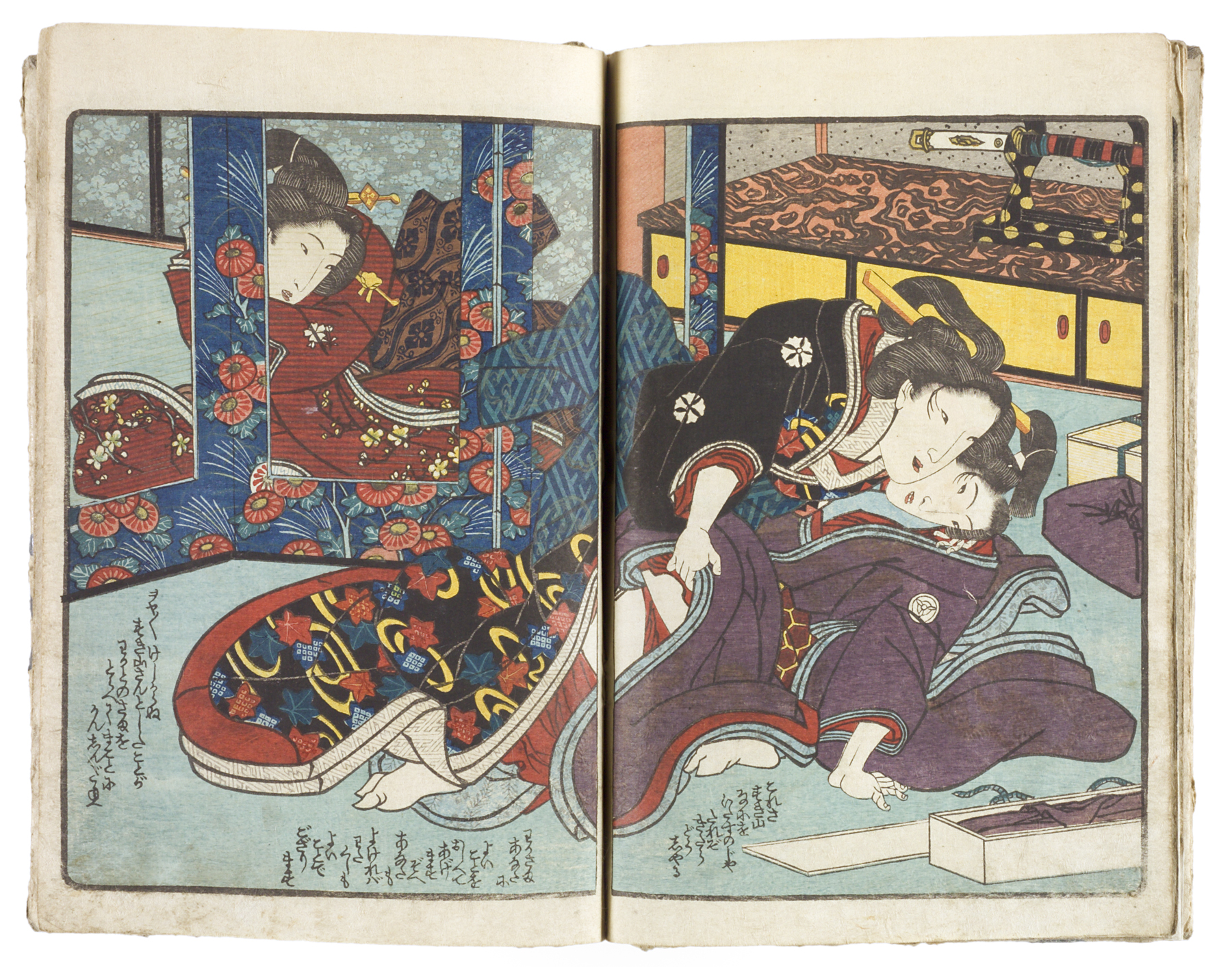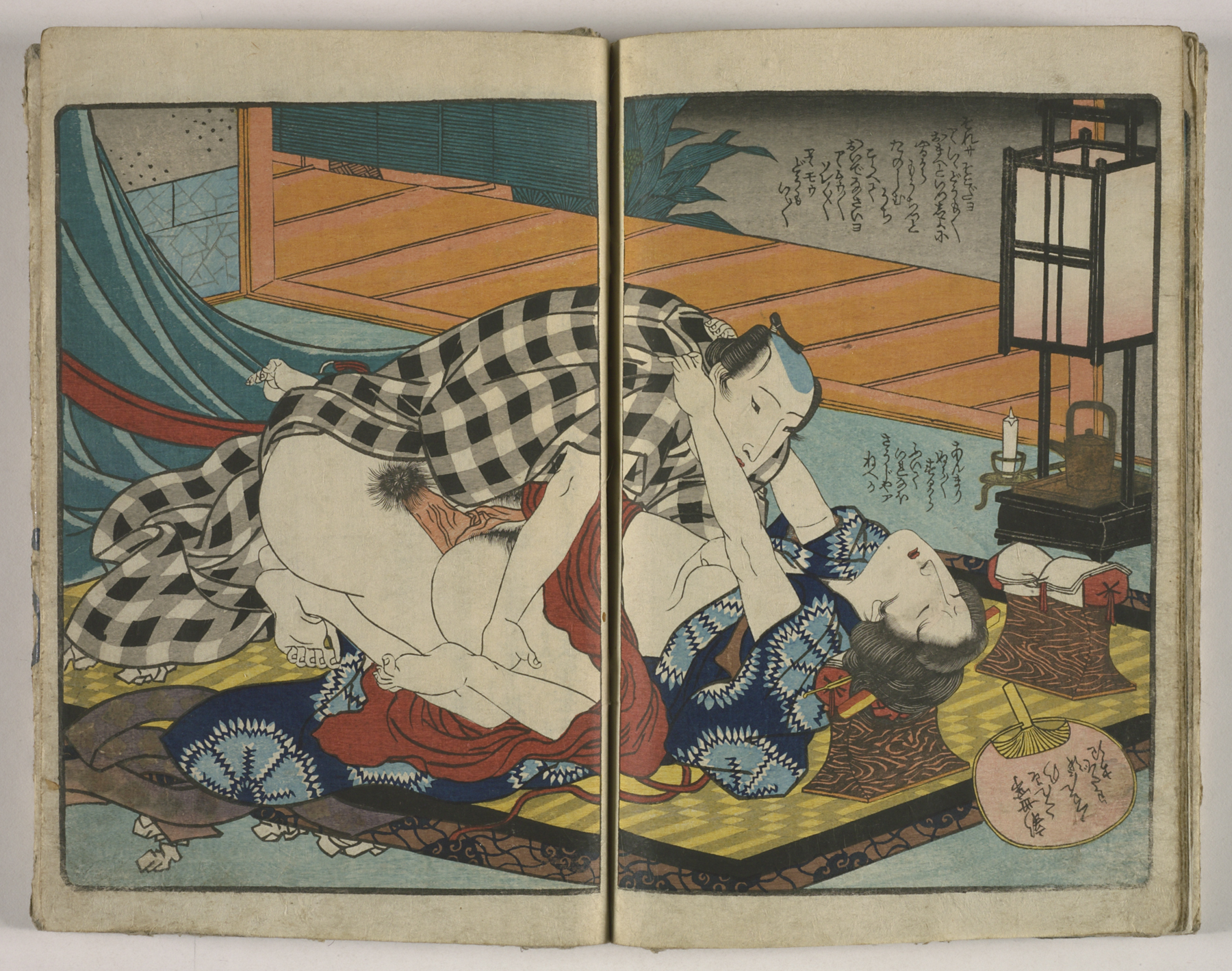Passionate Finger Puppets, Keisai Eisen
Artwork Overview

Keisai Eisen, artist
1790–1848
Passionate Finger Puppets,
circa 1830s, Edo period (1600–1868)
Where object was made: Japan
Material/technique: color woodcut; fukuro-toji
Dimensions:
Object Height/Width/Depth (Height x Width x Depth): 215 x 155 mm
Object Height/Width/Depth (Height x Width x Depth): 8 7/16 x 6 1/8 in
Object Height/Width/Depth (Height x Width x Depth): 215 x 155 mm
Object Height/Width/Depth (Height x Width x Depth): 8 7/16 x 6 1/8 in
Credit line: Museum purchase: R. Charles and Mary Margaret Clevenger Fund
Accession number: 1999.0206.01-3
Not on display
If you wish to reproduce this image, please submit an image request


